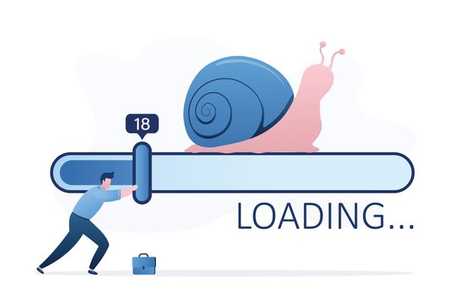Insights > Improve SEO and speed up your website with a Headless CMS
PublishedImprove SEO and speed up your website with a Headless CMS

In this day and age, website performance is more critical than ever, with users expecting lightning-fast load times and Google prioritising faster sites in search rankings. Slow websites can lead to higher bounce rates, lost engagement, and negatively impact SEO and traffic. However, headless CMS offers a modern solution by decoupling content management from the presentation layer, allowing for significant speed boosts without compromising design and functionality. This approach enables seamless content delivery across multiple platforms and devices while maintaining optimal performance. In this article, we explore the mechanics and real-world applications of headless CMS, and highlight strategies and best practices to help your website meet and exceed user expectations.
Understanding the need for speed
It’s often overlooked how website speed directly impacts user behaviour and SEO. Research shows that 40% of users will abandon a site if it takes longer than three seconds to load, and a one-second delay in page response can lead to a 7% reduction in conversions. These statistics underscore the importance of optimising your website's speed to retain user interest, improve engagement, and enhance overall user experience. Faster websites not only rank higher in search results but also drive more traffic and boost conversions, making performance optimisation a crucial aspect of digital success.
What are the mechanics of Headless CMS
Decoupling content and presentation
A headless CMS changes the traditional content management system architecture by separating the backend (content repository) from the frontend (presentation layer). This separation allows for a more efficient content delivery process. Unlike traditional CMSes, where content and presentation are tightly interwoven, a headless CMS lets content be managed and delivered independently of how it's displayed. This decoupling enhances flexibility and allows developers to use any frontend technology, optimising the user experience across various platforms and devices.
API-Driven Flexibility
The core of a headless CMS's functionality lies in its use of APIs (Application Programming Interfaces). APIs facilitate the seamless distribution of content and functionality across multiple channels, whether it's a website, mobile app, or IoT device. This API-driven approach ensures that content and functionality is delivered quickly and efficiently, regardless of the platform. By leveraging APIs, businesses can ensure that they are always up-to-date and accessible, providing a consistent user experience across all touchpoints. This flexibility is crucial in a multi-device world, where users expect a seamless experience whether they're accessing content on a desktop, tablet, or smartphone.

Performance gains with a Headless CMS
Why is it faster ?
One of the most significant advantages of a headless CMS is it's speed. By decoupling the content management system from the presentation layer, content can be delivered directly to the user without the need for additional processing. This streamlined approach significantly reduces the time it takes for content to reach the end-user, resulting in faster load times and a more responsive website. Insights from TechTarget indicate that headless CMSs significantly outperform traditional CMSs in terms of page performance, making them an ideal choice for businesses looking to enhance their website speed and performance.
Best practices for implementing a Headless CMS
Strategic planning and execution
Implementing a headless CMS requires careful planning and execution to ensure alignment with business goals, as it may not be the right option for everyone. A step-by-step approach can help businesses effectively transition to a headless CMS and maximise its benefits. Key steps include:
- Assessing business needs: Identify the specific performance issues and user experience goals that a headless CMS can address.
- Selecting the right CMS: Choose a leading headless CMS like Sanity that aligns with your business requirements and offers all of the necessary features and flexibility.
- Planning the transition: Develop a detailed plan for transitioning from a traditional CMS to a headless CMS, including timelines, resource allocation, and risk management.
- Executing the plan: Implement the transition plan, ensuring that all stakeholders are aligned and that any potential issues are addressed promptly.
- Monitoring and optimisation: Continuously monitor website performance and make necessary adjustments to optimise the benefits of the headless CMS.
Leveraging modern technologies
To fully realise the benefits of a headless CMS, it's essential to integrate cutting-edge technologies and tools. This includes leveraging modern frontend frameworks, such as React or Angular, to enhance the user experience and ensure fast, responsive websites. Additionally, using content delivery networks (CDNs) can further improve content delivery speed by caching content closer to the end-user. By embracing modern technologies, businesses can maximise the performance gains of a headless CMS and deliver a superior user experience.
Future-proofing your website
Scalability and adaptability
A headless CMS is inherently scalable and adaptable, making it an ideal solution for businesses looking to future-proof their websites. As your business grows and evolves, a headless CMS can easily accommodate increased content volume and new content delivery channels. This scalability ensures that your website can handle higher traffic levels and deliver a consistent user experience, regardless of the number of users or devices accessing your content.
Continuous optimisation
To maintain and enhance website speed over time, continuous optimisation is essential. This involves regularly monitoring website performance, identifying areas for improvement, and implementing necessary changes to ensure optimal performance. By adopting a proactive approach to optimisation, businesses can ensure that their websites remain fast, responsive, and user-friendly, providing a superior user experience and driving long-term success.
Embracing a headless CMS optimises website speed and future-proofs your online presence, enabling effortless scaling and continuous performance optimisation. When milliseconds matter, innovation is a necessity.
Would you like to explore how a headless CMS can revolutionise your website— Let's talk.
